Let's figure out what mushrooms grow on stumps
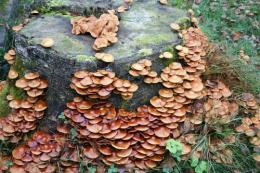
Mushrooms grow not only in the mycelium, which is located in the soil, but also on stumps and trees. Today in the forest you can find a large number of different mushrooms, which are classified as edible and inedible, and choose various areas for their “place of residence”. In most cases, mushrooms that grow on stumps are included in the category of fungi - saprophytes, the nutrients for which are the remains of other microorganisms.
Content:
What mushrooms grow on stumps?
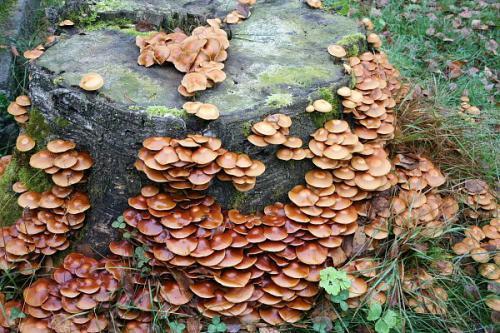
- The well-known mushrooms, which are popularly called honey mushrooms, grow on stumps. These are red and yellow-red mushrooms. These mushrooms are included in the category of edible mushrooms; they can be fried, boiled, or pickled without fear. The mycelium of mushrooms is located on fairly old stumps of coniferous trees - these are spruce and pine.
- Another famous mushroom, which also grows on the stump, is oyster mushroom. The most favorable conditions for development are created by the stumps of trees such as linden, maple, elm, and aspen. You can harvest oyster mushrooms in the fall, from mid-September to the end of October. Mushrooms grow in large “families” of several dozen pieces. Oyster mushrooms can be eaten, but only when the mushroom is young. Overripe oyster mushrooms can cause serious poisoning, as microorganisms that are poisonous to humans begin to develop in them.
- Mature stumps deciduous trees Ideal for active growth and reproduction of fungi such as tiger sawfoil.The best time to harvest such a mushroom harvest is from mid-June to the end of October. Young mushrooms have excellent taste and can be eaten either boiled or fried.
- Another mushroom that grows on stumps is the tinder fungus. If the young mushroom is not very hard, then it can be fried and eaten, because mature and hard mushrooms will be dangerous to the human body.
Growing mushrooms on stumps

Today, many gardeners grow mushrooms on their property, artificially creating conditions that are most favorable for the development of mushrooms. Growing mushrooms on stumps is a rather interesting process, which is fraught with a large number of features and nuances. All the necessary material for sowing, mycelium and fruiting is carried out directly in the garden plot itself, and not in the forest.
In order to create the necessary conditions for yourself, it is best to use stumps young deciduous trees, the diameter of which ranges from 25 to 70 cm. The main condition is that the stump must be clean, that is, no foreign fungi should grow on it. The process of infecting wood with fungal material can be carried out at any time of the year, but the most suitable period for this is from April to June. For the process of creating mycelium, it is best to use mycelium.
It is necessary to sow mushrooms in the lower part of the stump, which is adjacent to the ground itself. If you use hemp of great height, then you need to sow the part that is located at a level of 4-6 cm from the surface of the earth.
It is best to carry out sowing process in September or early October, since it is during this time period that the most favorable weather for the creation of mycelium occurs.In order for fruiting bodies to appear in such mushrooms as quickly as possible. Like oyster mushrooms, the most favorable weather is a daytime temperature ranging from 12-18°C, while the night temperature should drop to 4-8°C.
One stump can become a good basis for mycelium, which will regularly produce up to 100 rudiments of fruiting bodies. Depending on what weather conditions persist, the fruiting period of the mycelium can be 30-50 days. In dry and hot weather, it is necessary to thoroughly water the stumps at least twice a week.
Mushrooms that have been planted artificially on a tree stump can, on average, bear fruit for up to 6-8 years before the wood substrate is completely destroyed. The maximum level of mycelium productivity can be observed in the second and third years after it was planted on a given tree stump. It is worth noting that in addition to a constant and good mushroom harvest, you will be able to achieve gradual destruction of the stump, and in the end there will be no need to uproot it.
Many experts advise growing mushrooms in your garden in this way, using the stump of a deciduous tree. You will be able to receive not only good harvest, and throughout the entire summer period, but also get mushrooms that were grown in environmentally friendly conditions and are distinguished by nutritional and medicinal properties.
In nature, there are a number of mushrooms that grow not in the soil, but on tree stumps. This is a small number of species that are distinguished by their excellent taste and beneficial properties. Such mushrooms can be grown artificially in your own area.
Educational video about growing oyster mushrooms on stumps:
Interesting information about the vegetable garden

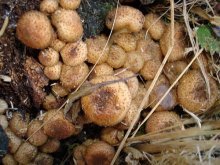
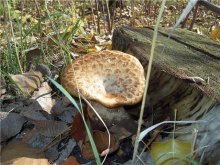

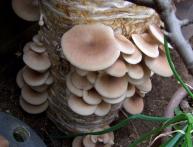

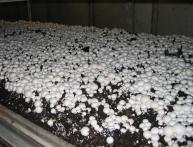

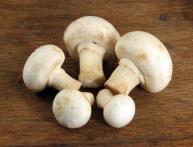
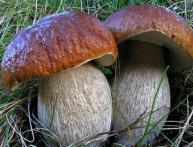
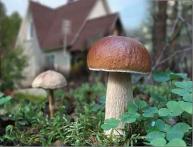
Comments
I tried growing oyster mushrooms on old stumps outdoors. I can’t say that I took this seriously, so the harvest was appropriate. And the bad thing is that the mycelium rarely survived the winter.
Once upon a time, on an old, withered tree that stood in our garden, some unknown mushrooms grew, very large, but they didn’t look like oyster mushrooms at all, we didn’t eat them, we were afraid.